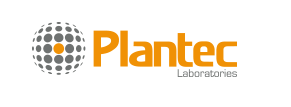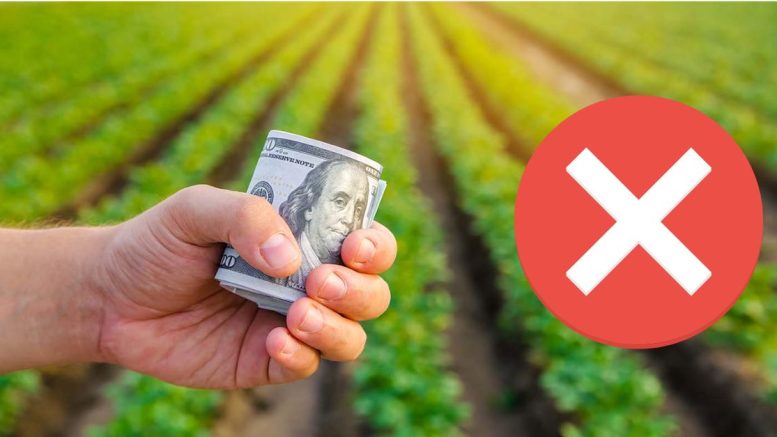Lack of Credit Challenges Brazil’s Agricultural Inputs Market
Brazil
The deadlines previously established by MAPA Ordinance No. 805, of June 9th, 2025, were extended. Those deadlines establish the National Program for Traceability of Agrochemicals and Related Products and contain other provisions. (DOU, MAPA Ordinance No. 817, of July 21st, 2025, MAPA)
On July 16th, Mosaic inaugurated its fertilizer plant in Palmeirante, State of Tocantins, in the presence of local authorities and Mosaic’s Executive Vice President, Jenny Wang. With an annual capacity of 1 million tonnes, the plant is expected to handle approximately 500,000 tonnes by 2025. The plant received an investment of US$ 84 million. (The Mosaic Company)
In compliance with the court decision, Anvisa approves toxicological evaluation of S-metolachlor 847 + sulfentrazone 88 g/L EC by Syngenta. (DOU, Resolution No. 2714 of 07/18/2025, Anvisa)
On Thursday, July 24th, at 7:30 pm, the Rural Union of Sorriso, Mato Grosso, will host a lecture on “Microorganisms in Soil – The Path to Reducing Costs and Increasing Your Productivity.” The event, an initiative of GoGenetic Agro, in partnership with the Union, will bring together farmers, agronomists, and professionals from the industry to discuss the impacts of microbiological analysis. “Soil is a living and complex ecosystem, and with better understanding about its microbiology, we can guide smarter, have lower-cost and use more efficient management practices,” says Vânia Pankievicz, the company’s COO. “Understanding soil microorganisms helps to anticipate solutions, prevent diseases and maximize productivity.” (GoGenetic Agro)
Inácio Barbosa Maritime Terminal, operated by VLI in Barra dos Coqueiros, SE, ended the 1H of 2025 with consistent operating results. Between January and June, the terminal recorded an 18% increase in cargo volume handled compared to the same period last year, with emphasis on imports of wheat, cement, and fertilizers. (VLI)
IdeeLab Biotechnology has started operations at its first manufacturing facility in Cambé, in the State of Paraná. The industrial park, covering approximately 3,000 square meters, received an investment of US$ 5.39 million. The company expects to generate 300 direct and indirect jobs within three years. The factory is equipped with bioreactors ranging in capacity from 100 liters to 5,000 liters. Automated systems enable an annual production of up to 1 million liters of bioinputs. The goal is to reach 6 million liters by 2027. (IdeeLab)
Governor of the state of Goiás, Ronaldo Caiado, visited an innovative project in Yokohama, Japan, which aims to install an ecological fertilizer plant in the state. The Japanese startup Tsubame BHB, in partnership with Atvos, will implement the initiative in the municipality of Mineiros, Goiás. The project is expected to receive more than US$ 35.91 million in investments. (Government of Goiás)
Agricultural inputs market faces one of its biggest challenges in 2025: difficulty in accessing credit. According to an analysis by Jeferson Souza, a market intelligence analyst, the issue has been a recurring topic in conversations with industry professionals, including pesticide, seed, resale, and fertilizer blending companies. This limitation has directly impacted the pace of negotiations for the 2025/26 season. Currently, it is estimated that between 20% and 25% of fertilizer purchases are still open for soybeans, a clear reflection of credit restrictions. A similar scenario is expected for corn. The combination of high interest rates and financial insecurity throughout the production chain has hampered sales and supply commitments. (Agrinvest Commodities)
Fertilizer deliveries in Brazil totaled 12.12 million tonnes between January and April 2025, representing a 10.7% increase compared to the same period in 2024, according to the National Association for Fertilizer Distribution. In April, deliveries totaled 2.68 million tonnes, up 16.8% from the 2.29 million tonnes recorded in the same month last year. (ANDA)
On July 16th, CropLife Brazil released a statement in response to an Embrapa study that pointed to an increase in herbicide use in Brazil. The entity states that, despite the growth, the country remains highly efficient in the use of agrochemicals, ranking 41st worldwide in application per hectare harvested. “This index proves that, even under adverse weather conditions and high pest pressure, Brazil uses pesticides with technical efficiency and responsibility.” CropLife attributes the increase in herbicide use to structural factors, such as the intensification of tropical crops, which produce two to three harvests per year, and the expansion of productive areas. In addition, it highlights the growing resistance of weeds to herbicides. (CropLife Brazil)
Tera Fertilizantes will invest approximately US$ 10.77 million to expand its plant in Iguatama, located in the Central-West region of Minas Gerais. The announcement was made on July 15 during a meeting between company representatives and Governor Romeu Zema. In 2024, the company had already invested US$ 3.59 million in the first phase of the project. With the new funding, total investments will reach US$10.77 million over a three-year period. Production for 2025 is estimated at 70,000 tonnes of fertilizers. (Tera Fertilizantes)
Prices remain high, pressured by geopolitical factors, strong demand, and raw material costs. This scenario, combined with the recent devaluation of the Brazilian real, tends to worsen the terms of trade with grains such as soybeans, corn, and cotton. As a result, farmers will need more bags to purchase the same amount of inputs. (Itaú BBA)
Port of Itaqui recorded record traffic in the first half of 2025, with 17.2 million tonnes of cargo, an increase of 10% over the same period in 2024 and 7% above plan. Solid bulk led the way, with soybeans standing out at 8 million tonnes, up 10%. Fertilizers also stood out, reaching almost 2 million tonnes, an increase of 39%. (Secom-MA)
Applications are open until July 25th for the fourth edition of the Carlos Florence Award, organized by the National Association for Fertilizer Dissemination. The initiative aims to encourage academic research focused on the fertilizer sector, offering a prize of approximately US$2,690. (ANDA)
Technical representatives from wine cooperatives in the State of Rio Grande do Sul, such as Aurora, Garibaldi, Aliança, São João, and Paraíso, visited the Campinas Agronomic Institute. Approximately 20 professionals discussed best practices for applying pesticides to grape crops with researcher Hamilton Ramos. During the meeting, Ramos emphasized the importance of proper training for applicators and precise adjustment of equipment, especially agricultural sprayers. (IAC)
Embrapa has secured US$ 6.95 million in funding for research in biotechnology, sustainability, and agricultural innovation. The largest approved amount, US$ 2.57 million, will go to the project “INCT MicroAgro: Biotechnological Innovations with Microorganisms for Productive and Sustainable Agriculture,” led by researcher Mariangela Hungria from Embrapa Soybean. (Embrapa)
Marcos A. Dallagnese is the new commercial director of Orbia, a marketplace for agricultural inputs and other products. (Orbia)

Latin America
Yara reported improved results for the second quarter of 2025. Adjusted Ebitda totaled US$ 652 million, up 27% from the same period in 2024. Net income reached US$ 413 million, compared to US$ 3 million in 2024. In the Americas division, adjusted Ebitda grew 43% to US$ 239 million. Growth was driven by higher volumes, production margins, and lower fixed costs. Deliveries increased 9%, with Brazil standing out. (Yara International)
Researchers from Argentina‘s National Scientific and Technical Research Council are developing an RNA-based biopesticide to control greening (HLB). The bioinsecticide allows for specific and selective control of the insect vector, the psyllid (Diaphorina citri), without affecting other insects. “What we are trying to do is send a genetic message that can only be interpreted by the target species. Then, with this ‘self-destruction’ message, we are able to interfere with genetic activity,” explains Marcos Miretti, one of the project coordinators. Field tests have confirmed the effective interruption of psyllid gene activity. Next steps in development include validating the encapsulation technology, expanding field evaluation, and obtaining product registration. (Conicet; INTA)
Researchers and students at the Autonomous University of Guadalajara in Mexico have developed and patented a probiotic bio-input based on endophytic bacteria that combats black Sigatoka disease in bananas, reducing the use of fungicides by up to 35%, increasing productivity from 1,800 to 3,200 boxes per hectare per year, improving fruit quality, and generating less environmental impact. The project involved 30 students and has treated 500 hectares in Colima, with support from the Jalisco Innovation Secretariat and national and international commercial interest. (UAG)
Syngenta opened up an Agricultural Innovation Center in Paraguay, in Yguazý, in the Alto Paraná department. “Syngenta 365 was created as a comprehensive approach to supporting farmers, ensuring we are present every day of the year, not just during the harvest season. We want to add real value from planning to harvest,” said Ricardo Ovalle, Syngenta’s marketing manager for Paraguay, Uruguay and Bolivia. (Syngenta)
Peru imported 162,582 tonnes of urea for US$ 65.6 million in the 1H of 2025, with 71% of this total coming from Russia (US$ 46.8 million), followed by Malaysia (US$ 15.4 million) and Bolivia (US$ 2.5 million). The main importing companies were Molinos & Cia (US$ 37 million), Ceres Perú (US$ 11.4 million), Macrosource Perú (US$ 8.9 million), and Equilibra Perú (US$ 5.2 million). (Agrodata)
Researchers at the National University of Engineering in Peru, led by researcher Hugo Alarcón, have developed a technology that uses electricity and light to transform agricultural waste into reusable fertilizers, converting nitrates into ammonium, cleaning contaminated water. (UNI; Prociencia)
Corteva and Pioneer launched the “Lacunas” program in Uruguay, which is already underway in Argentina, and which seeks to reduce the gap between the productive potential and actual yields of soybeans and corn, based on data, management, and technology. The initiative involves three modules per regional technical team: current farmer yield, intensive management for high potential, and an intermediate module focused on rentability. (Corteva)
Liquid fertilizers are gaining ground in Uruguay because they offer up to a 30% reduction in costs due to greater nutrient availability, more efficient application, and simplified logistics, according to Leandro Armoa of ALS. In partnership with Megaagro, ALS achieved good results with wheat and canola, but adoption is still limited by cultural issues. (ALS; Megaagro)

READ MORE:

